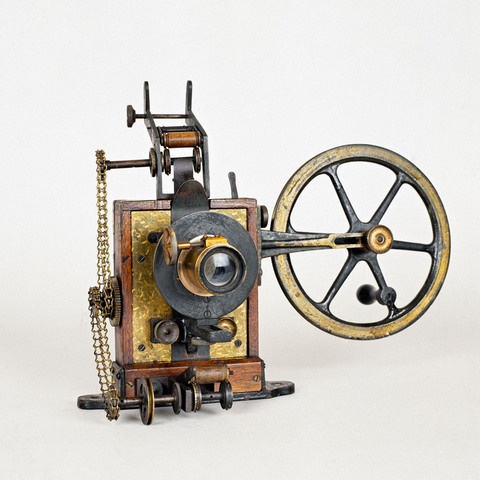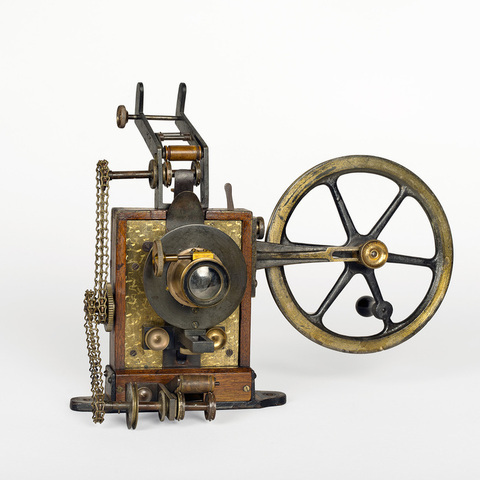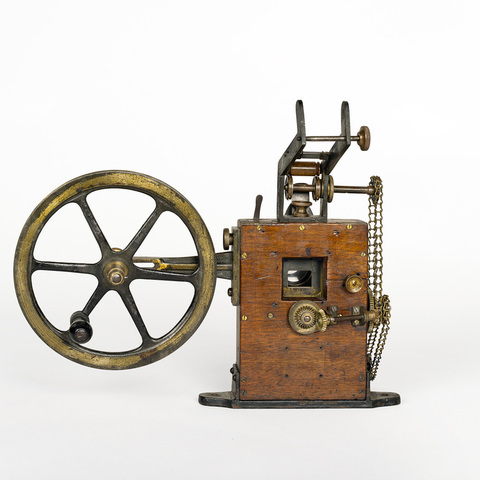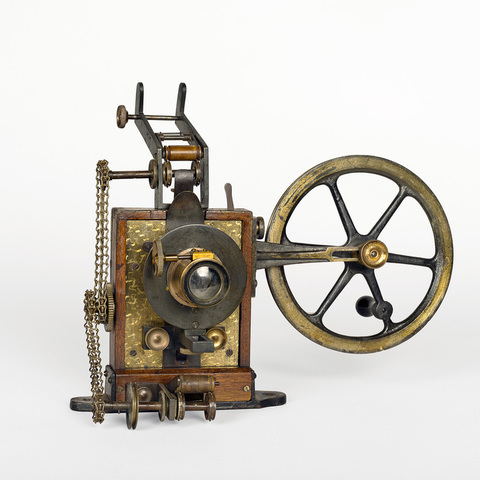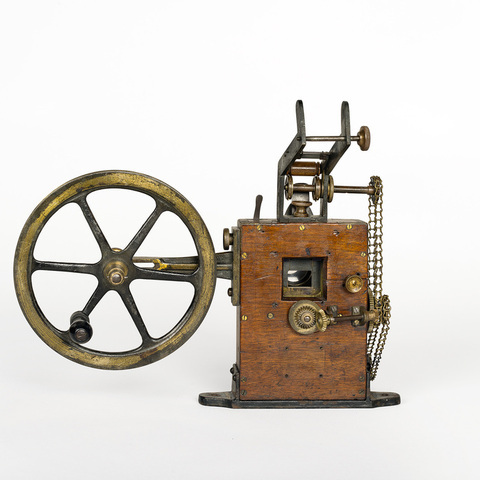Projecteur de film 35 mm
Fiche détaillée
Type de l'appareil
entraînement du film 35 mm par deux griffes ; deux débiteurs ; obturateur une pale ; pièce métallique rectangulaire, disposée excentriquement sur le disque obturateur et glissant dans une rampe horizontale qui porte le cadre porte-griffes ; roue d'entraînement ; échelle de projection ; fenêtre réglable ; deux chaînes d'entraînement
Auteurs
Baxter Cecil William
Bradford, York, Borough Mills, Manchester Road
Wray Cecil
Bradford, York, Borough Mills, Manchester Road
Oulton Joseph
Bradford, York, Borough Mills, Manchester Road
Fabricants
Cecil William Baxter
Bradford, York, Borough Mills, Manchester Road
Cecil Wray
Bradford, York, Borough Mills, Manchester Road
Utilisateurs
Baxter Cecil William
Bradford, York, Borough Mills, Manchester Road
Wray Cecil
Bradford, York, Borough Mills, Manchester Road
Oulton Joseph
Bradford, York, Borough Mills, Manchester Road
Distributeurs
Baxter & Wray et Butcher & Son
Londres, Blackheath
Sujet du modèle
Informations non disponibles
Objectif
3 lentilles 3,5 cm Ø
Taille de l'objet
Ouvert :
Informations non disponibles
Fermé :
Longueur : 24 cm
Largeur : 38 cm
Hauteur : 30 cm
Diamètre :
Informations non disponibles
Taille de la boîte de transport
Informations non disponibles
Remarques
Double en état incomplet : AP-94- 76.
"Perfection Cinematograph. The new cinematograph termed The Perfection, which is the outcome of experiments by Messrs. Baxter and Wray, of Bradford, appears to leave nothing to be desired. It is small in size, beautiffuly made, and is one of the simplest we have seen for engaging a roll of film. The end of the film is merely pushed through its slot and the handle turned when it is bound to fall right. No sprocket wheel is employed but instead two spring fingers engage into the perforations of the film and as soon as this has been drawn down the required distance they recede and move upwards to be again thrust out at the required space. No matter at what rate the machine may be driven it works with unfailing certainty and will cause the film to be moved backwards if desired with the same ease. Without any alteration whatever this machine will take films perforated with either the Lumiere or Edison gauge ; in fact, the two styles of films can be used joined end to end. As we are to have the opportunity of giving this instrument an extended trial, we shall allude to its advantages again shortly" (Optical Magic Lantern Journal and Photographic Enlarger, mai 1898, p. 81).
"A cinematographic attachment for lanterns has been issued by Messrs. Butcher & Son, which can be secured to almost any lantern body at a moment's notice. The lower part is of cast metal for screwing to the lantern base. The film is brought forward by two pins, which engage in the perforations of the film. These pins recede when the film has been brought forward to the required distance, and remain thus until they again reach the top" (Optical Magic Lantern Journal and Photographic Enlarger, décembre 1899, p. 170).
Bibliographie
Optical Magic Lantern Journal and Photographic Enlarger, octobre 1897, p. XIV.
Optical Magic Lantern Journal and Photographic Enlarger, mai 1898, p. 81.
Optical Magic Lantern Journal and Photographic Enlarger, octobre 1898, p. 152.
Optical Magic Lantern Journal and Photographic Enlarger, décembre 1899, p. 170.
John Barnes, Pioneers of the British Film, Londres, Bishopsgate Press Ltd, 1983, p. 97.
Henry Hopwood, Living Pictures, Londres, Optician & Photographic Trades Review, 1899, p. 178.
